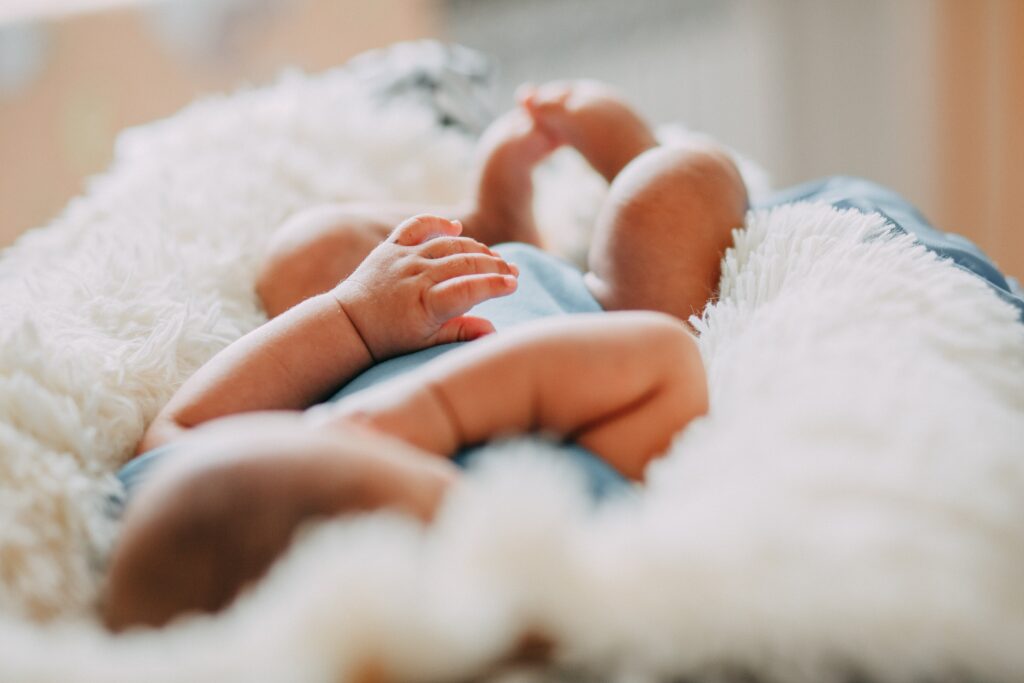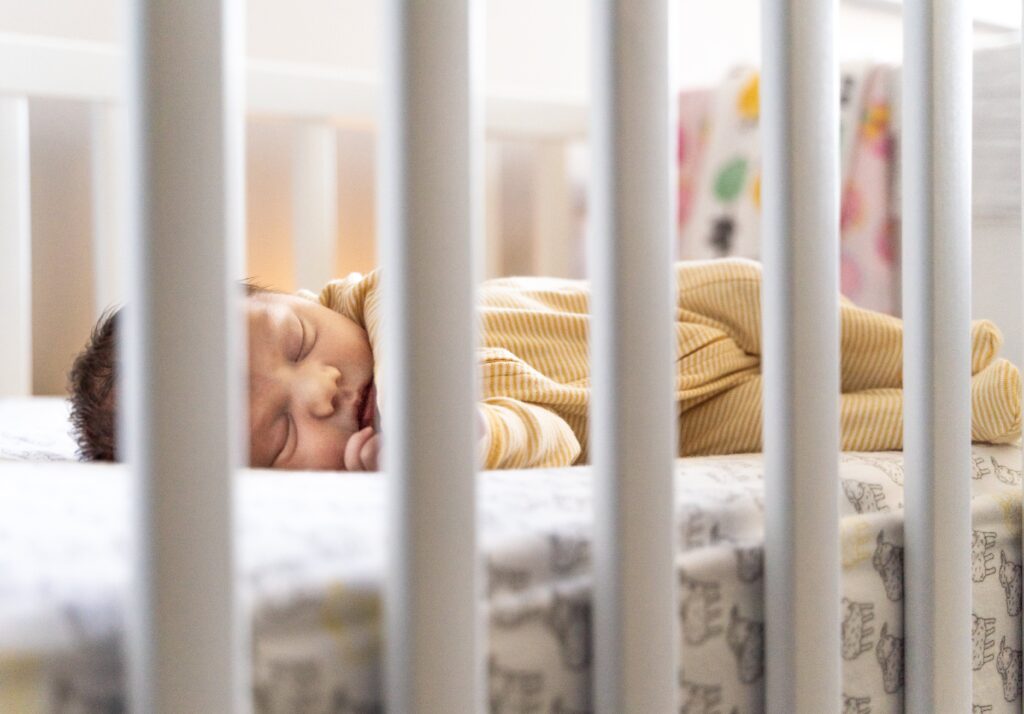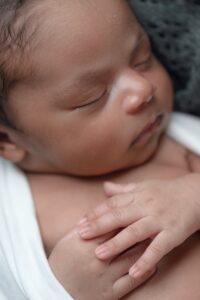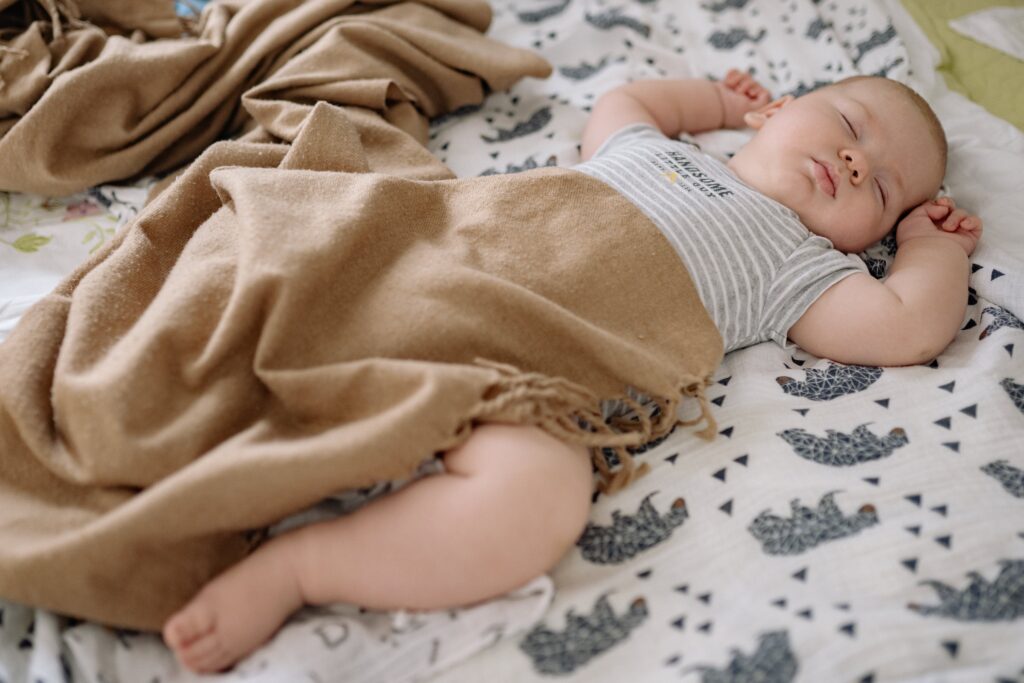Safe sleep infants – Learn more with Healthier Baby Today! Welcoming a new addition to the family brings unparalleled joy, but as parents, ensuring the safety and well-being of our infants is a paramount responsibility.
One of the critical aspects of infant care revolves around creating a secure sleep environment. This guide will explore the critical elements of safe sleep practices for infants.
From creating a secure sleep space to understanding the importance of sleep positioning and recognizing potential risks, we aim to provide parents with the knowledge and tools to ensure their baby sleeps soundly and safely.
Join us as we delve into the practices recommended by pediatric experts and organizations to promote a secure as well as comfortable sleep environment for your precious little ones.
Table of Contents
1. Creating a Safe Sleep Infants Environment

The first step in fostering a secure sleep environment for your infant involves thoughtful considerations in setting up their sleep space. Implementing the proper measures ensures a haven for your baby to rest peacefully.
Let’s delve into the key aspects:
1. Choosing a Safe Crib or Bassinet
Selecting the appropriate crib or bassinet lays the foundation for your baby’s safety during sleep.
Consider the following factors:
- Safety Standards – Ensure the crib or bassinet meets current safety standards without recalls or concerns.
- Mattress Fit – The mattress should fit snugly within the crib, leaving no gaps where tiny limbs could get trapped.
- Sturdy Construction – Opt for a crib or bassinet with durable construction to provide a stable sleeping environment for your infant.
2. Proper Positioning of the Crib in the Room
Where you place the crib within the nursery can impact your baby’s sleep safety.
Take these factors into account:
- Proximity to Windows – Avoid placing the crib near windows to minimize exposure to drafts and direct sunlight.
- Distance from Heating Sources – Ensure the crib is safe from radiators, heaters, or other heat sources.
- Accessibility – Position the crib to allow easy access for nighttime check-ins without compromising safety.
3. Keeping the Sleep Area Free of Toys and Loose Bedding
Maintaining a clutter-free sleep space reduces the risk of accidents and enhances your baby’s comfort.
Follow these guidelines:
- No Soft Bedding – Remove pillows, soft bedding, and stuffed animals from their crib to prevent suffocation hazards.
- Firm Mattress – Choose a firm mattress to reduce the risk of Sudden Infant Death Syndrome (SIDS) and provide ample support.
- Temperature Control – Dress your baby appropriately for room temperature, eliminating the need for heavy blankets.
By diligently addressing these aspects, you create an environment where your baby can sleep soundly, minimizing potential risks and maximizing their safety and comfort.
2. Choosing Safe Sleepwear

Ensuring your infant is dressed appropriately for sleep is crucial to creating a safe sleep environment. The right sleepwear keeps your baby comfortable and reduces the risk of overheating.
Let’s explore essential considerations:
1. Guidelines for Dressing Infants for Sleep
Proper sleep attire contributes to your baby’s well-being during the night.
Follow these guidelines for dressing your infant:
- One-Piece Sleepers – Opt for one-piece sleepers or wearable blankets to cover your baby’s entire body.
- Seasonal Considerations – Adjust the thickness of sleepwear based on the room temperature and season. Layering can be a practical approach.
- Diaper-Friendly – Choose sleepwear that allows easy access for diaper changes without fully undressing your baby.
- Comfortable Fabrics – Prioritize soft, breathable fabrics like cotton to prevent skin irritation and ensure comfort.
2. The Importance of Avoiding Overheating
Overheating is a potential risk factor for infants during sleep. Be mindful of the room temperature and your baby’s clothing to prevent overheating:
- Room Temperature – Maintain a comfortable room temperature between 68 to 72 degrees Fahrenheit (20 to 22 degrees Celsius).
- Check for Signs – Feel your baby’s neck or back to gauge their temperature. If they feel sweaty or hot, consider adjusting their clothing.
- Use Light Blankets – Choose a lightweight and breathable option if a blanket is necessary. Avoid heavy quilts or comforters.
- Avoid Hats Indoors – While hats are essential for outdoor warmth, they can contribute to overheating indoors. Save them for outdoor excursions.
By adhering to these guidelines, you create a safe sleepwear routine that ensures your infant stays cozy without the risk of overheating, promoting a comfortable and secure sleep environment.
3. Sleep Positioning

The position in which you place your infant to sleep plays a pivotal role in their safety and well-being.
The “Back to Sleep” campaign, endorsed by health organizations worldwide, emphasizes placing infants on their backs for sleep.
Let’s delve into the significance of this practice and the associated risks of stomach and side sleeping:
1. Explanation of the “Back to Sleep” Campaign
- Reduction in SIDS Risk -The “Back to Sleep” campaign was initiated to try to reduce the risk of Sudden Infant Death Syndrome (SIDS). Placing infants on their backs when asleep has been associated with a significant decline in SIDS cases.
- Optimal Airway Positioning – Back sleeping allows for optimal airway positioning, minimizing the likelihood of airway obstruction or suffocation.
- Consistent Messaging – Pediatricians and healthcare professionals consistently advocate for placing infants on their backs for every sleep, including naps and nighttime sleep.
2. Risks Associated with Stomach and Side Sleeping
- SIDS Risk Increase – Placing infants on their stomachs or sides has been linked to an increased risk of SIDS. This position can lead to difficulty breathing and potential overheating.
- Airway Obstruction – Stomach sleeping poses a higher risk of airway obstruction, as the baby’s face is more likely to be covered by bedding or the mattress.
- Development of Flat Head Syndrome – Prolonged stomach or side sleeping may contribute to positional plagiocephaly or flat head syndrome.
3. Decreased Arousal
Infants placed on their stomachs may have a reduced ability to wake themselves if faced with a breathing challenge, potentially increasing the risk of sudden, unexplained death.
By adhering to the “Back to Sleep” recommendation, parents can significantly contribute to their infant’s safety during sleep, reducing the risk of SIDS and ensuring proper airway positioning throughout the night.
Always consult healthcare professionals for personalized advice based on your baby’s unique needs and health considerations.
4. Use of Pacifiers

Introducing a pacifier into your baby’s sleep routine can be a valuable tool for comfort and safety.
Understanding the benefits and implementing safe practices for pacifier use can contribute to a positive sleep environment.
Let’s explore the advantages of using pacifiers during sleep and guidelines for their safe introduction and usage:
1. Benefits of Using Pacifiers During Sleep
- Soothing Comfort – Pacifiers offer a natural and effective way to soothe and comfort infants, promoting a sense of security during sleep.
- Reduced SIDS Risk – Studies suggest that the use of pacifiers during sleep is associated with a reduced risk of Sudden Infant Death Syndrome (SIDS), making them a valuable addition to safe sleep practices.
- Self-Soothing – Pacifiers can help babies learn self-soothing techniques, aiding in developing healthy sleep patterns.
- Naptime and Bedtime Aid – Pacifiers can be particularly helpful in easing the transition to sleep during naptime and bedtime, providing a calming routine.
2. Safe Practices for Introducing and Using Pacifiers
If breastfeeding, wait until breastfeeding is well-established before introducing a pacifier to avoid potential nipple confusion.
- Choose the Right Time – Introduce a pacifier when your baby is calm and content, but not solely as a substitute for feeding.
- Clean and Safe Pacifiers – Regularly clean pacifiers with warm, soapy water and ensure they are free from cracks or signs of wear. Use an age-appropriate pacifier with no small parts that could pose a choking hazard.
- Avoid Pacifier Attachments – Refrain from attaching pacifiers to your baby’s clothing or crib using strings or cords, as these can pose strangulation risks.
- Monitor Pacifier Use – Be mindful of your baby’s reliance on a pacifier and gradually wean them from it around six months to reduce dependency and potential dental issues.
- Replace When Necessary – Regularly check pacifiers for signs of wear and replace them as needed to ensure Baby Sleep Safety.
By responsibly incorporating pacifiers into your Baby Sleep Safety routine, you can harness their soothing benefits while maintaining a safe sleep environment.
Always consult your pediatrician for personalized guidance on pacifier use based on your baby’s unique needs and health considerations.
5. Room Sharing vs. Bed Sharing

Choosing where your baby sleeps is a significant decision in Baby Sleep Safety that involves weighing the advantages and disadvantages of room and bed-sharing.
Let’s explore the pros and cons of having the baby in the parent’s room and the risks associated with bed-sharing:
1. Pros and Cons of Having the Baby in the Parent’s Room
Pros:
- Closer Monitoring – Room sharing allows proximity to monitor your baby’s needs, providing a sense of security for both parent and child.
- Convenience for Nighttime Feedings – Having the baby in the same room can make nighttime feedings more convenient, fostering a quicker response to the baby’s needs.
- Bonding Opportunity – Room sharing promotes bonding between parents and infants, as the baby feels the comforting presence of their caregivers.
Cons:
- Potential Sleep Disturbances – Parents and infants may disturb each other’s sleep due to natural noises or movements.
- Transition Challenges – Moving safe sleep infants to their room later may pose challenges as the infant becomes accustomed to the constant presence of parents.
2. Risks Associated with Bed Sharing
While some parents choose to share their bed with their infants, it’s essential to be aware of potential risks with Baby Sleep Safety:
- Suffocation Hazard – The risk of accidental suffocation increases when the baby sleeps in an adult bed, mainly if there are soft bedding materials.
- Rolling Risks – There is a risk of a parent unintentionally rolling onto the baby during sleep, posing a potential danger.
- Increased SIDS Risk – Bed-sharing has been associated with a larger risk of Sudden Infant Death Syndrome, especially in certain circumstances.
6. Recognizing and Reducing SIDS Risk

1. Sudden Infant Death Syndrome (SIDS) Awareness
- Definition – SIDS refers to the sudden and unexplained death of an otherwise healthy infant during sleep.
- Age Range – Most cases occur between one and four months of age, with the highest risk around two to three months.
2. Steps to Reduce the Risk of SIDS
- Back to Sleep – Always place your Safe Sleep Infants on their back to sleep, as this position is associated with a lower risk of SIDS.
- Firm Sleep Surface – Use a firm mattress with a fitted sheet and avoid soft bedding materials to reduce the risk of suffocation for Safe Sleep Infants.
- Room Sharing, Not Bed Sharing – Consider sharing without bed-sharing to maintain proximity while minimizing risks associated with sharing the same sleep surface.
- Avoid Overheating – Dress your baby in light sleepwear and keep the room comfortable to prevent overheating.
- Pacifier Use – Consider offering a pacifier during sleep, as it has been associated with a reduced risk of SIDS.
- Regular Check-ups – Attend regular well-baby check-ups to monitor your infant’s growth and development.
By adopting these safe sleep infants practices and staying informed about SIDS awareness, parents can create a secure sleep environment for their safe sleep infants while minimizing potential risks.
Always consult healthcare professionals for personalized advice based on your baby’s unique needs and health considerations.
Positions for Safe Sleep Infants and Newborns Will Benefit From…
Prioritizing Baby Sleep Safety practices is paramount for the well-being of your infant.
From choosing a secure sleep environment to embracing the “Back to Sleep” recommendation, using pacifiers responsibly, and being mindful of room-sharing dynamics, these practices contribute to a safer and more comfortable sleep experience for your baby.
By staying informed about Sudden Infant Death Syndrome (SIDS) and taking proactive steps to reduce associated risks, you empower yourself as a parent to provide the best possible sleep environment for your precious little one.


